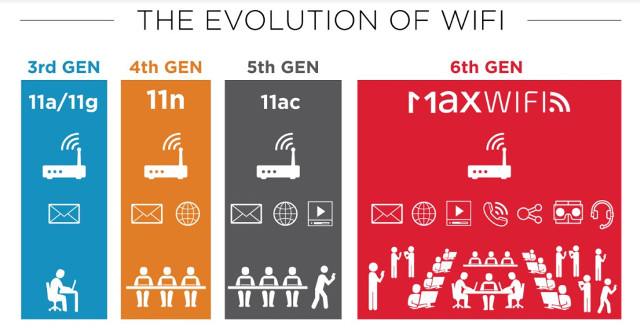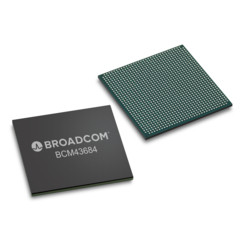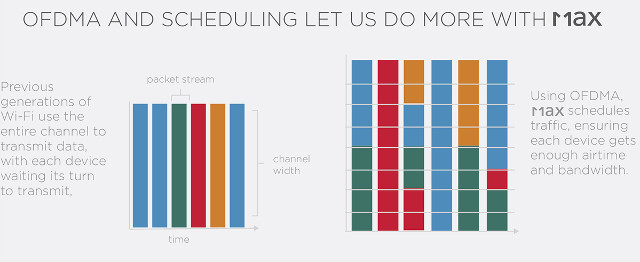We’ve already written about the new 802.11ax WiFi standard that promises up to 10 Gbps data rates, support for 2.4 & 5 GHz bands, up to 4x longer range, and better handling of high density scenarios. It appears 802.11ax we’ll be known as Max WiFi to the masses, and Broadcom has unveiled Max WiFi solutions for home and enterprise routers, as well as a smartphones.
There are currently three Max WiFi solutions from Broadcom:
- BCM43684 & BCM43694 4×4 802.11ax chips, respectively optimized for residential and enterprise access points, share the same key features:

- Support for four streams of 802.11ax
- 4.8 Gbps PHY rate
- 160 MHz channel bandwidth
- 1024 QAM modulation
- Uplink & downlink OFDMA (Orthogonal Frequency Division Multiple Access)
- MU-MIMO
- ZeroWait DFS (Dynamic Frequency Selection)
- AirIQ interference identification
- Full compliance to IEEE and WFA 802.11ax specifications
- BCM4375 smartphone combo chip:
- Support for 2-streams of 802.11ax
- Bluetooth 5 including Low-Energy Long Range (LELR)
- Real Simultaneous Dual-Band (RSDB)
- 1.429 Gbps PHY Rate
- 1024 QAM Modulation
- OFDMA
- MU-MIMO
Beside the improvements listed in the introduction, 802.11ax / Max WiFi will also improve power efficiency with claims of up to 7 times better battery life for devices using features like Target Wake Time (TWT), which allows the Wi-Fi radio in battery powered devices to go to sleep when not exchanging data.
Broadcom is sampling Max WiFi solutions to its early access partners, so we should probably expect 802.11ax / Max WiFi devices sometimes in 2018.

Jean-Luc started CNX Software in 2010 as a part-time endeavor, before quitting his job as a software engineering manager, and starting to write daily news, and reviews full time later in 2011.
Support CNX Software! Donate via cryptocurrencies, become a Patron on Patreon, or purchase goods on Amazon or Aliexpress






